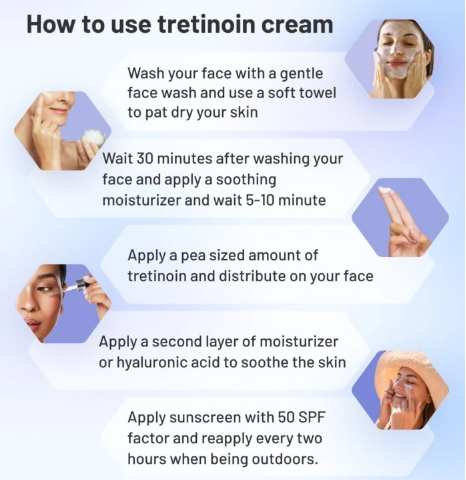Sebaceous Filaments are a natural part of the skin’s physiology and are frequently confused with papules due to their appearance. They primarily do on the nose, chin, and forepart and serve the purpose of channelizing oil painting from the sebaceous glands to the skin’s face. While they may act papules, sebaceous fibers are lighter in color and have a smoother texture.

Sebaceous Filaments on the Nose
The nose is a common area where sebaceous fibers are conspicuous due to the advanced attention of sebaceous glands in this region. They appear as small, leg- suchlike blotches on the nose’s face, frequently slate or light unheroic in color. Unlike papules, sebaceous fibers aren’t raised and can not be uprooted in the same way.
Treatment and Removal Methods
It’s important to note that sebaceous filaments are a natural part of the skin and cannot be entirely eliminated.
However, several approaches can help minimize their appearance and maintain healthy skin:
Regular Cleansing:
A best skin cleanser Consistent skincare routine involving gentle cleansing helps remove excess oil skin and dead skin cells, preventing the buildup of sebum in the pores.
Exfoliation:
Chemical exfoliants containing salicylic acid or alpha hydroxy acids (AHAs) can help dissolve dead skin cells, reducing the appearance of sebaceous filaments. Over-exfoliation should be avoided to prevent skin irritation.
Complexion Masks Applying complexion masks sometimes can help absorb redundant oil painting from the skin and minimize the appearance of pores, including those containing sebaceous fibers. Retinoids Topical treatments containing retinoids help regulate skin cell development, precluding severance blockages and reducing the visibility of sebaceous fibers over time. Professional Treatments Dermatological procedures like microdermabrasion, chemical peels, or professional lines can be considered for more severe cases under the guidance of a dermatologist.
DIY Remedies for Sebaceous Filaments
- Several natural remedies can round skincare routines and aid in managing sebaceous fibers oil painting sanctification Using canvases like jojoba oil or argan oil painting for oil painting sanctification can help dissolve sebum and unclog pores without stripping the skin’s natural canvases .
- Brume Facials storming the face can open pores and make it easier to cleanse contaminations. Be conservative with the temperature and duration to help skin vexation.
- Honey Masks Honey possesses antibacterial parcels and can be used as a gentle mask to cleanse and moisturize the skin.
Recognizing Sebaceous Filaments
Sebaceous fibers are frequently incorrect for papules due to their appearance. They are generally lighter in color and have a smoother texture than papules. They may appear as bitsy leg- suchlike blotches on the skin, substantially on the nose, chin, and forepart.
Safe and Effective Management
- Gentle Cleansing Use a mild,non-comedogenic cleaner doubly daily to remove redundant oil painting and dirt without stripping the skin’s natural canvases . Avoid harsh diminutives or abrasive cleaners that can irritate the skin.
- Chemical Exfoliation Incorporate products containing salicylic acid or nascence hydroxy acids( AHAs) into your skincare routine. These chemical exfoliants help dissolve dead skin cells, precluding the buildup of sebum in pores.
- Oil painting sanctification Consider using oil painting cleaners formulated for your skin type to gently dissolve and remove redundant oil painting and contaminations without causing vexation.
- Conclude for canvases like jojoba, argan, or grapeseed, which are less likely to clog pores. complexion Masks Occasional use of complexion masks can help absorb redundant oil painting from the skin and minimize the appearance of pores without causing detriment.
- Use them as directed and avoid overuse, which can lead to blankness. Professional Guidance Consult a dermatologist for professional advice and treatments acclimatized to your skin enterprises. They can recommend suitable products or procedures to manage sebaceous fibers effectively.
Avoid Squeezing or Forceful Extraction
Trying to squeeze or strongly remove sebaceous fibers can lead to skin vexation, inflammation, and implicit scarring. similar conduct can worsen the appearance of the skin and compromise its health in the long run.
Sebaceous Filaments vs. Blackheads
Understanding the differences between sebaceous fibers and papules is pivotal for effective treatment Sebaceous fibers:
- These are small, light- multicolored structures, generally slate or unheroic, and feel soft and smooth to the touch. They are substantially set up in the T- zone( nose, chin, forepart) and are a natural part of the skin’s oil painting regulation system.
- Papules Papules are darker in color, more pronounced, and are entrapments within pores. They form due to the clogging of pores with redundant oil painting and dead skin cells. The dark appearance is due to oxidation. Unlike sebaceous fibers, papules are a type of acne lesion.
Treatment Options for Sebaceous Filaments
- Gentle Cleansing Use a mild cleaner twice a day to remove redundant oil painting and contaminations without drying out the skin. Chemical Exfoliation Incorporate products containing salicylic acid or AHAs into your routine.
- These help dissolve dead skin cells and reduce the appearance of sebaceous fibers without causing damage. oil painting sanctification Try oil painting- grounded cleaners or canvases like jojoba or argan oil painting to gently dissolve and remove redundant sebum without farther clogging pores.
- complexion Masks sometimes use complexion masks to absorb redundant oil painting and minimize the appearance of pores, including those containing sebaceous fibers. Professional Treatments Dermatologists may recommend treatments like microdermabrasion, chemical peels, or professional lines performed under controlled conditions for effective operation.
Sebaceous Filaments on the Nose and Chin Specific Treatment Methods
- Avoid Squeezing Refrain from squeezing or manually removing sebaceous fibers. This can lead to skin vexation, inflammation, and implicit scarring.
- Consult a Dermatologist For patient enterprises about sebaceous fibers on the nose or chin, consult a dermatologist.
- They can offer substantiated advice and recommend suitable treatments grounded on your skin type and enterprises.
Maintaining Sebaceous Filaments
- Gentle Cleansing Use a mild cleaner suitable for your skin type to remove redundant oil painting and debris withoutover-drying.
- Exfoliation Incorporate chemical exfoliants containing salicylic acid or nascence hydroxy acids( AHAs) into your routine.
- These help remove dead skin cells and reduce the appearance of sebaceous fibers. Avoid Harsh Products Steer clear of harsh diminutives or aggressive treatments that can irritate the skin and complicate the appearance of sebaceous fibers.
- Regular Skincare Routine thickness in skincare is crucial. Establish a routine that includes sanctification, exfoliation( if suitable for your skin type), and moisturizing to maintain skin health.
Managing Sebum in the Nose
- Gentle Cleansing Use a mild cleaner suitable for your skin type to remove redundant oil painting and debris withoutover-drying.Exfoliation Incorporate chemical exfoliants containing salicylic acid or nascence hydroxy acids( AHAs) into your routine
- These help remove dead skin cells and reduce the appearance of sebaceous fibers. Avoid Harsh Products Steer clear of harsh diminutives or aggressive treatments that can irritate the skin and complicate the appearance of sebaceous fibers.Regular Skincare Routine thickness in skincare is crucial.
Products for Sebaceous Filaments
Choosing products that suit your skin type and target sebaceous fibers can be salutary. Look for products labeled asnon-comedogenic( will not clog pores) and containing constituents like Salicylic Acid Helps slip the skin, unclog pores, and manage sebaceous fibers. nascence Hydroxy Acids( AHAs) similar as glycolic acid or lactic acid, aid in exfoliation and perfecting skin texture oil painting.
Cleaners Some individualities find oil painting- grounded cleaners effective in managing sebum and keeping pores clear. Always patch- test new products and introduce them gradationally into your skincare routine to insure. They suit your skin and do not beget adverse responses.
What Are Sebaceous Filaments?
Sebaceous filaments are a natural part of the skin’s physiology and are constantly confused with pustules due to their appearance. They primarily do on the nose, chin, and forehead and serve the purpose of channeling oil painting oil from the sebaceous glands to the skin’s face. While they may act pustules, sebaceous filaments are lighter in color and have a smoother texture.
Conclusion
Sebaceous fibers are a natural aspect of skin health and can not be entirely excluded. Still, by espousing a gentle skincare routine. It incorporating suitable products, and seeking professional guidance. It’s possible to manage their appearance effectively without resorting to dangerous styles like squeezing or forceful birth. Prioritize skin health and gentle care to maintain a balanced and healthycomplexion.
However, consulting a dermatologist is always judicious for substantiated advice and treatment options, If enterprises persist. While complete junking is not possible, harmonious sanctification, exfoliation, and occasional. It treatments can help minimize their appearance, promoting healthier- looking skin.



